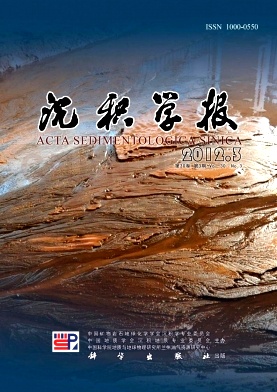Abnormal Transformation of the Clay Minerals in Yinggehai Basin and Its Significances
- Publish Date: 2012-06-10
-
Key words:
- overpressure /
- hot fluid /
- clay mineral transformation /
- secondary porosity /
- diagenesis /
- /
- /
- /
Abstract: Yinggehai Basin is a Cenozoic marine sedimentary basin with total sediment of 17 km, occupying an area of 11 104 km2, located in the continental shelf of South China Sea. The basin is structurally composed of Yingdong Slope, Yingxi Slope and Central Depression. Due to the existence of the overpressures and the movements of geothermal fluids, there are various unusual geological phenomena in Yinggehai Basin. There exist three types of clay mineral transformations in the basin, normal transformation, faster transformation and slower transformation. The Cenozoic group in Yingdong Slope develops hydrostatic pressure, and the clay minerals transform regularily. With the increase of buried depth and temperature, smectite transforms into illite by illite/smectite mixed layer, and smectite layer content S% in illite/smectite mixed layer decreases gradually. There exist overpressures in the Cenozoic group of Central Depression. DST measured pressure coefficient even reaches 2.4 in LD3011A well district located in the southeast of the depression. As the measured S% in I/S data show that the overpressures retard the transformation of clay minerals,the clay minerals transform more slowly in the overpressure formation , and the S% in I/S mixed layer is 10%~30% higher than that of formations with a hydrostatic pressure at the same depth in Yingdong Slope. Overpressure’s retardation also resulted in the putoff of the expulsion of H+, interlayer water and various cations, which lead the dissolution and cementation of the contiguous reservoirs to be weakened. The cements of Cenozoic group reservoirs in LD3011A well are lower 50% than that of Yingdong Slope at the same depth. During Neocene, a large scale of diapirism developed, and geothermal fluids richer in CO2 with a temperature of 200℃were active in Central Depression. The activity of geothermal fluids accelerated the transformation of clay minerals. The S% in I/S mixed layer jumped to zone R2 or R3 from zone R0 abruptly, without going through zone R1. Meanwhile, chlorite turned to kaolinite unusually in the acid environment, which is confirmed by the Gibbs free energy increment computations. The quick transformation of clay minerals lead to a large amount of such cations as Na+,Ca2+,Mg2+,Fe3+,Si4+ expelled from the mudstones. These cations entered the adjacent sandstones and precipitated to form siderite, ankerite, dolomite and ferrocalcite, which filled the pores of the reservoirs and reduced the porosity of the reservoirs.
| Citation: | Abnormal Transformation of the Clay Minerals in Yinggehai Basin and Its Significances[J]. Acta Sedimentologica Sinica, 2012, 30(3): 469-476. |






 DownLoad:
DownLoad: